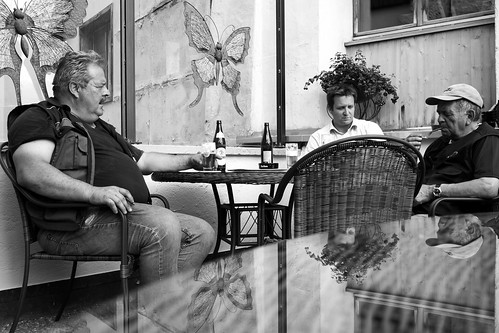
En quittant Limoges, en route vers Vayrac dans le Lot, nous nous sommes arrêtés à Uzerche.
En 1787, l’écrivain anglais Arthur Young a qualifié la ville de « Perle du Limousin », surnom dû à son site pittoresque et sous lequel elle est encore largement connue aujourd’hui. Bâtie au sommet d’un éperon rocheux, entourée par un méandre de la rivière Vézère qu’elle domine, Uzerche possède un patrimoine riche hérité des atouts défensifs de son site. D’abord centre décisionnel et carrefour important puis forteresse sous Pépin le Bref, la ville fut aussi le siège d’une puissante abbaye et plus tard d’une sénéchaussée. Héritage de cette aura, de nombreux châteaux, hôtels et autres bâtisses à tourelles construits par la noblesse uzerchoise s’élèvent encore de nos jours et justifient le dicton : « Qui a maison à Uzerche a château en Limousin ».
Leaving Limoges, on the way to Vayrac in the Lot, we stopped at Uzerche.
In 1787, the English writer Arthur Young called the town the “Pearl of Limousin”, a nickname due to its picturesque location and under which it is still widely known today. Built at the top of a rocky outcrop, surrounded by a bend in the Vézère river that it dominates, Uzerche has a rich heritage inherited from the defensive assets of its site. First a decision-making center and an important crossroads, then a fortress under Pépin le Bref, the city was also the seat of a powerful abbey and later of a senechaussee. A legacy of this aura, many castles, hotels and other turreted buildings built by the nobility of Uzbekistan still stand today and justify the saying: "Whoever has a house in Uzerche has a castle in Limousin".
Posted by claude lina on 2021-11-11 07:02:50
Tagged: , Claude Lina , Canon , France , Frankrijk , Uzerche , Corrèze , Nouvelle-Aquitaine , architecture , maison , house , colombage







